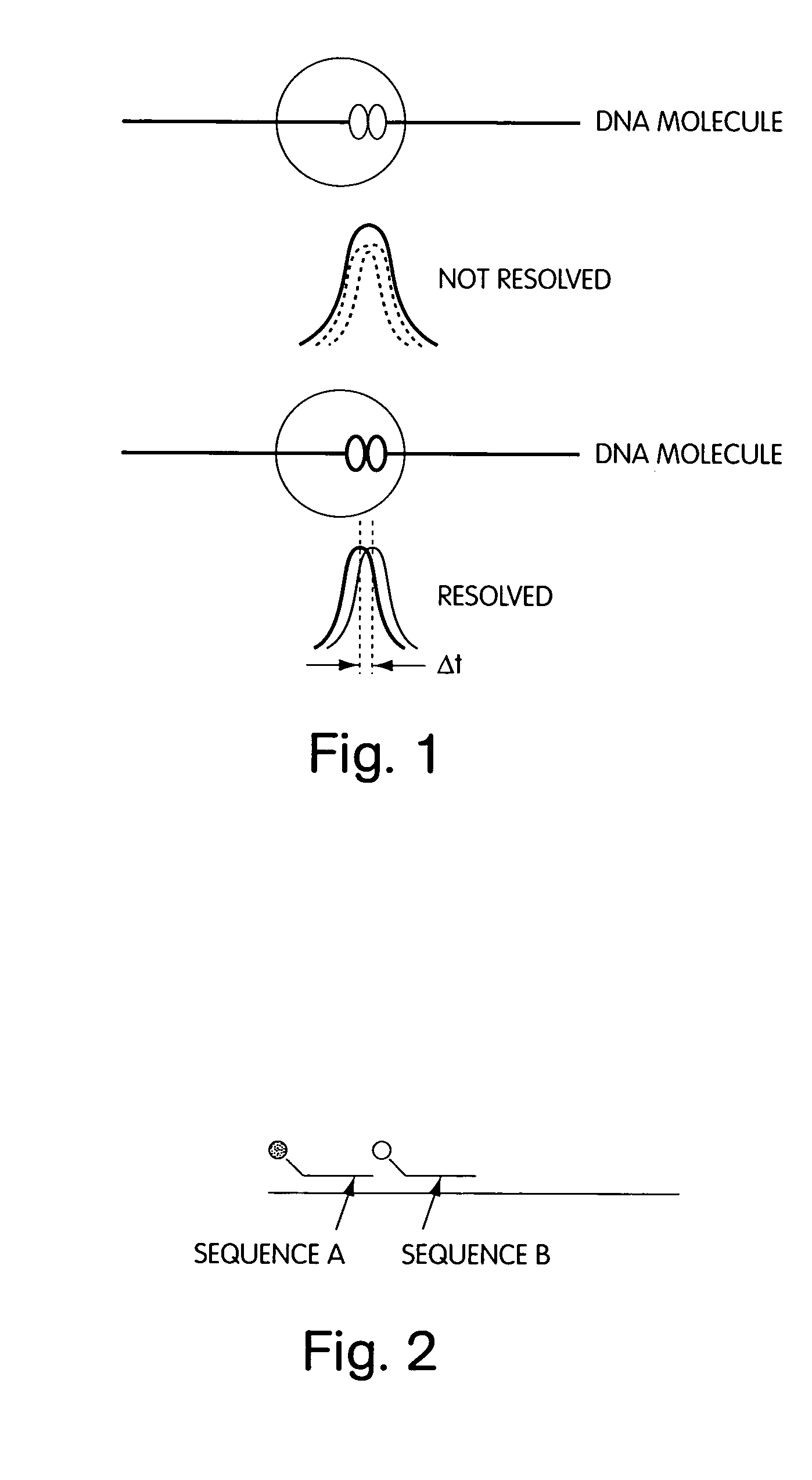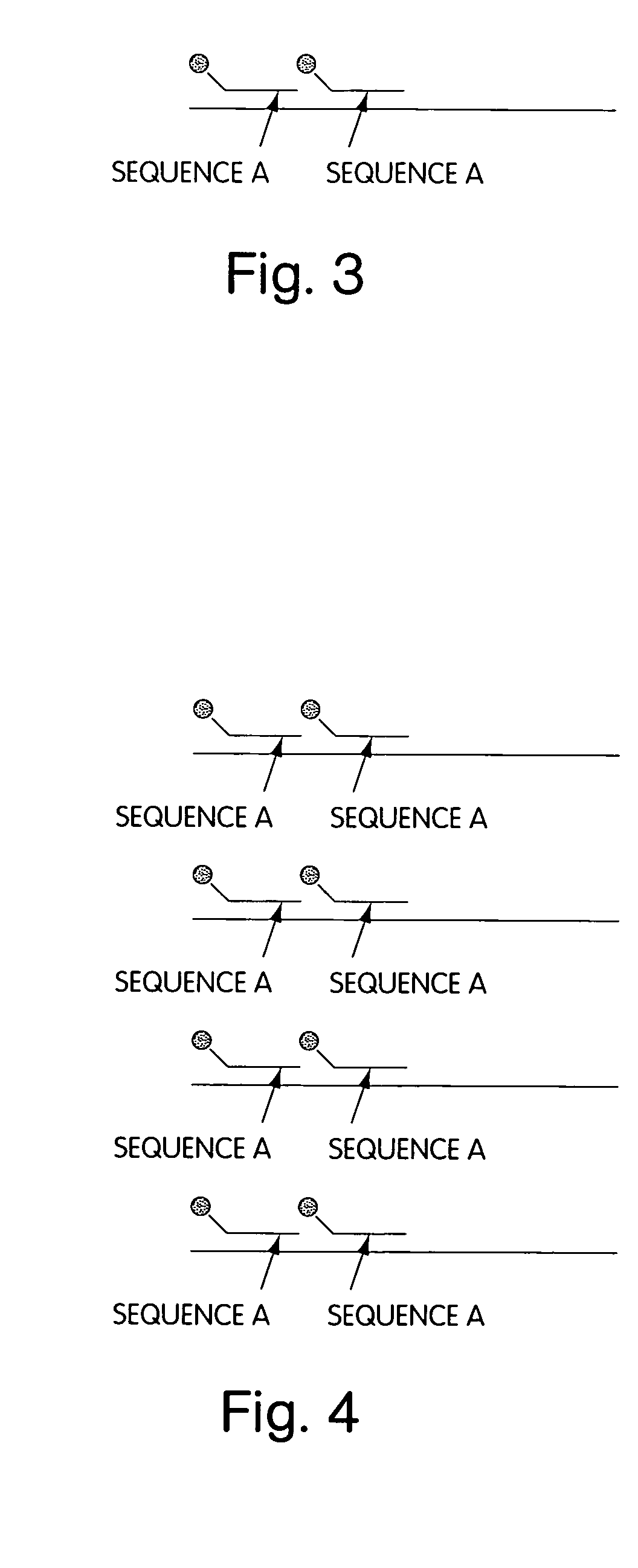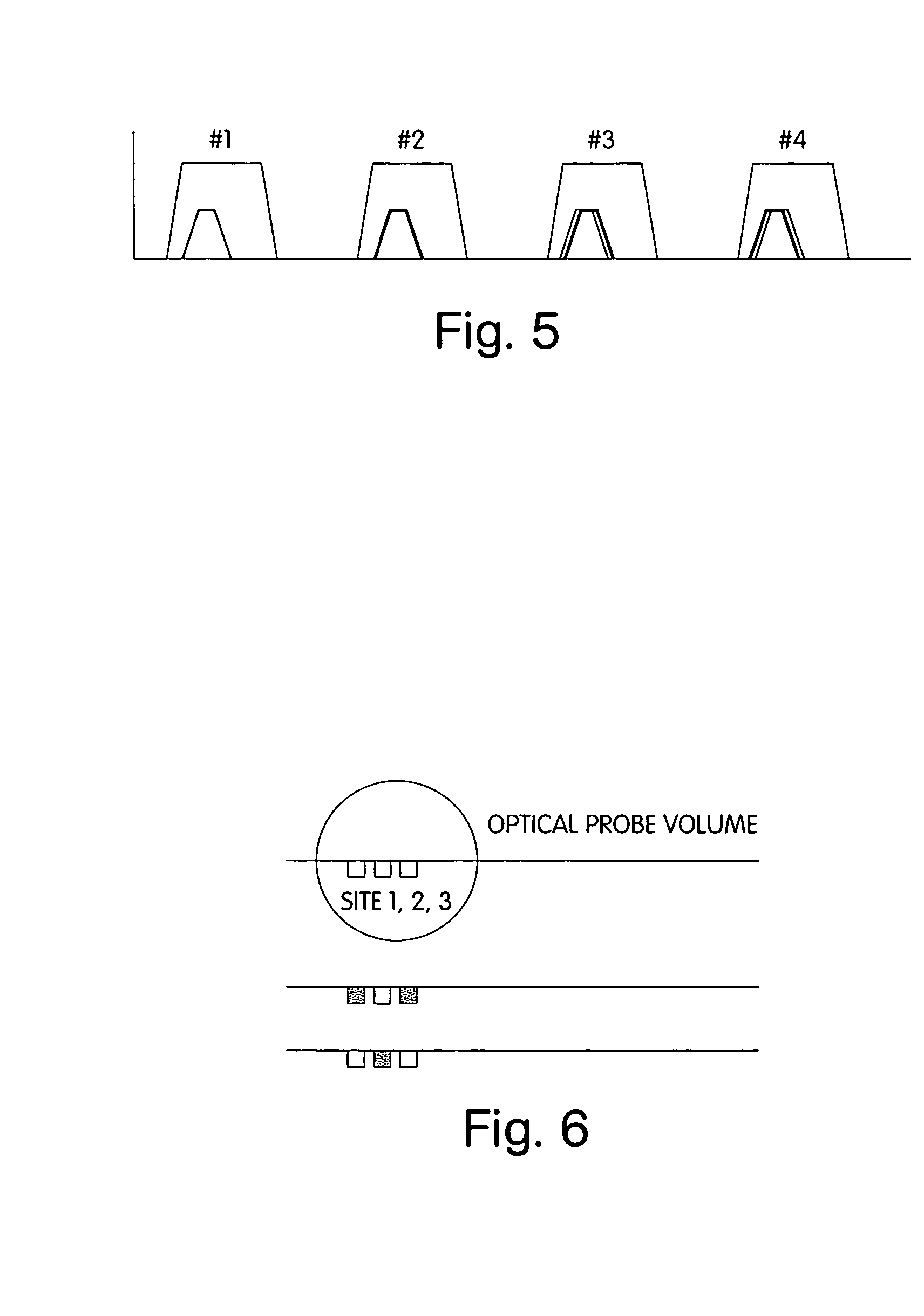High resolution linear analysis of polymers
a polymer and linear analysis technology, applied in the field of linear analysis of sequence information, can solve the problems of limited polymer analysis methods, achieve the effect of increasing the amount of data, increasing the efficiency and reducing the cost of polymer sequence analysis
- Summary
- Abstract
- Description
- Claims
- Application Information
AI Technical Summary
Benefits of technology
Problems solved by technology
Method used
Image
Examples
example 1
Different Fluorescent Sequence-specific Tags
[0212]There are many different types of fluorescent sequence-specific tags. These include fluorescent tags that can be differentiated by their emission spectra. Examples of fluorescent tags include standard dyes such as fluorescein, Cy3 and Cy5, all of which have different fluorescence emission spectra that can be distinguished using standard spectral filtering techniques. These techniques include dichroic mirrors, bandpass filters, notch filters, and combinations thereof. Fluorescent tags having the same spectra can also be distinguished by means of fluorescence lifetime determination. Fluorescence lifetime is the time between excitation and emission of a photon of a given fluorophore. For standard fluorophores such as those described, the fluorescence lifetime is on the order of 1 nanosecond to 5 nanoseconds. The use of two fluorophores with the same emission spectra but different lifetimes is another approach to multiplex the number of ...
example 2
Different Scanning Tunneling Sequence-specific Tags
[0213]The use of non-fluorescent based approaches for differential tagging and high-resolution linear analysis may include the use of scanning tunneling tips for the analysis and scanning of linear molecules such as DNA at high speeds. Using this technique, sequence specific tags may include gold particles, silica particles, as well as nanocrystals. Since scanning tunneling tips are capable of size discrimination, differential tagging approaches can exploit different sized particles as probe labels.
example 3
Different Types of Fluorophores Suitable for use with Monochromatic Excitation and Multicolor Detection Systems
[0214]There are a number of different types of fluorophores that can be used in systems comprising monochromatic excitation (e.g., single laser systems) and multicolor detectors. For example, for fluorescence-based approaches, the tags that can be spectrally distinguished based on their differential emission spectra include dyes such as Cascade Blue, Alexa dyes, Cy dyes, tetramethylrhodamine (TAMRA), rhodamine-6G, infrared dyes, Texas Red™, Oregon Green, fluorescein, all of which are commercially available from a number of sources including but not limited to Molecular Probes, OR.
[0215]As stated in Example 2, size can also be used to differentiate tags. Scanning tunneling based approaches can use semiconductor nanocrystals which yield size-dependent spectra. For instance, a 4 nm CdSe nanocrystal yields a different spectral emission than a 3 nm CdSe nanocrystal. Silica, gold...
PUM
| Property | Measurement | Unit |
|---|---|---|
| Time | aaaaa | aaaaa |
| Time | aaaaa | aaaaa |
| Length | aaaaa | aaaaa |
Abstract
Description
Claims
Application Information
 Login to View More
Login to View More - R&D
- Intellectual Property
- Life Sciences
- Materials
- Tech Scout
- Unparalleled Data Quality
- Higher Quality Content
- 60% Fewer Hallucinations
Browse by: Latest US Patents, China's latest patents, Technical Efficacy Thesaurus, Application Domain, Technology Topic, Popular Technical Reports.
© 2025 PatSnap. All rights reserved.Legal|Privacy policy|Modern Slavery Act Transparency Statement|Sitemap|About US| Contact US: help@patsnap.com



